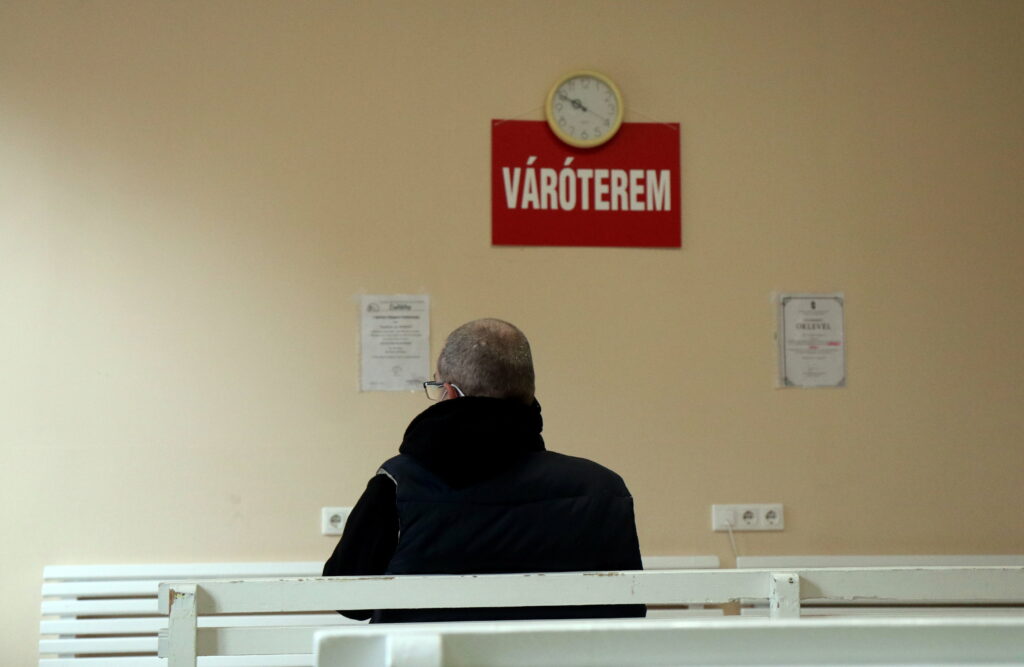The https://english.atlatszo.hu use cookies to track and profile customers such as action tags and pixel tracking on our website to assist our marketing. On our website we use technical, analytical, marketing and preference cookies. These are necessary for our site to work properly and to give us inforamation about how our site is used. See Cookies Policy
A decade was not enough to fix the Hungarian hospital waiting list register
In 2012, the Hungarian government introduced an online waiting list register operated by the National Health Insurance Fund Management (NEAK). The purpose was to make waiting lists for surgery more transparent, making it easier to find information on how long people have to wait for an operation and which surgeries have lengthy waiting lists in the public healthcare system. When analysing the data of the register, Atlatszo found that a significant part of the uploaded data is incorrect.
Hungarian surgical waiting list data has been publicly available online since 2012. However, the implementation of the system was not without difficulties. in June 2013, two-thirds of the data on the site was inaccurate, with cases recorded incorrectly or not at all, expired appointments, and gaps in the order of care. Six months later, this figure had fallen to 20 percent. Atlatszo’s recent analysis found that ten years after the introduction of the online waiting list system, the register still has many errors.

The primary purpose of the waiting list register is to allow the patient to see how long they will have to wait, and what is the expected time of care, using their case identification number. Cases are not archived, so only the data from the last six months is available.
Some surgeries still have long waiting lists
We started our data collection on the site: we archived all the cases waiting for surgery at two different times, six months apart – from August last year to January this year, and from February to July – to see how much waiting times have changed.
According to official data, waiting times have been reduced for most operations. Last year, the average waiting time for cataract surgery was 85 days, whereas in 2023, it is 64 days. Waiting times for spinal stabilisation surgery are also significantly lower, from 302 to 209 days on average.
But for the surgeries with the longest waiting lists, waiting times have increased further, with a difference of up to a month.
Errors in the official register
While analysing the data collected from the official waiting list register, we noticed a strange phenomenon: in several cases, the date of listing of patients is later than the date of surgery. In other words, the records show that many patients were added to the waiting list only after they received treatment.
This phenomenon was not confined solely to cases requiring urgent treatment, nor was it limited to just one hospital. Therefore, it cannot be explained solely by methodological flaws in the register. In the half-yearly data we examined, the number of days of the discrepancy was usually only one or two. However, there were several cases where the uploaded database had tens or even hundreds of days of delay. Between August 2022-January 2023, we found more than 10,000 incorrect data out of roughly 140,000 cases.
In the second data collection (February-July 2023), more than 18,000 out of 190,000,
meaning one in ten data was impossible to interpret.
The possible explanation for the errors could be that the waiting list data is reported by hospitals and then uploaded to the register without any changes. According to our information, NEAK only provides the interface, the hospitals are responsible for the data, and there is neither the possibility nor the capacity to check and review it. We have contacted the National Health Insurance Fund Management (NEAK) on this issue, but have not received a reply.
In March 2012, NEAK contracted Combit Számítástechnikai Zrt. to design and develop an online waiting list register. The company, whose main activity is computer programming, was paid a net amount of HUF 14 million. In the last five years, the company has typically achieved net sales of between HUF 700,000 and HUF 1 million, and its profit has been around HUF 50-80 million. According to its financial report, in the 2012 financial year, the year it signed a contract with NEAK, the company doubled its turnover (from 300 to 637 million). Its profit increased from 169 to 190 million.
Translated by Luca Pete and Zita Szopkó. The original, more detailed Hungarian version of this story can be found here. Bettina Bakó, Gerda Kántor-Újvári, Soma Kiss, Vanda Mayer, Sára Virág, and our reader helped to collect the waiting list data. This article was produced with the support of the Balkan Investigative Reporting Network (BIRN). The survey was conducted using BIRN’s B-Engaged tool. Company data was provided by Opten Ltd. Cover photo: A man waits after being vaccinated at the vaccination point at the Central Hospital and University Teaching Hospital of Borsod-Abaúj-Zemplén County in Miskolc on March 2, 2022. Photo credit: MTI/János Vajda.


